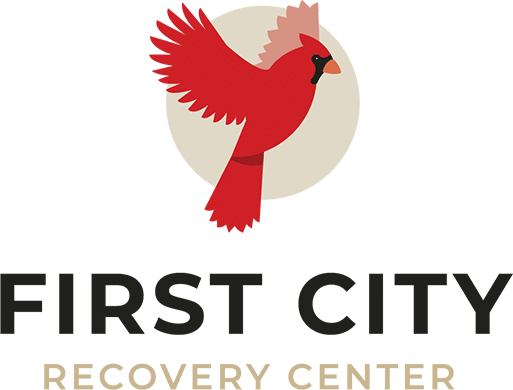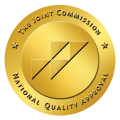How Long Does Heroin Stay in your System?
In 1990, there was an increase in the number of prescribed opioids since the pharmaceutical assured medics that the drugs wouldn’t cause any side effects when used as painkillers. This led to opioid misuse and overdoses that accounted for 42,000 deaths in 2016.
Later, it became clear that the drugs were addictive. In 2017 restrictions began when the HHS declared a public health emergency for the opioid crisis. People who had already become too dependent on opioids turned to heroin to avoid the withdrawal symptoms. Knowing how long heroin stays in your body is vital since misjudging the duration can lead to an overdose. Keep reading to gain more insights.
Table of Contents
ToggleWhat Is Heroin?
Heroin is a semi-synthetic opioid drug made from morphine that is commonly used for recreational purposes. This drug also falls in the Schedule I drug classification, meaning that it doesn’t have any accepted medical use currently, but it has a high potential of misuse. Globally, an estimate of about 9.2 million people use heroin.
People use the drug by injecting it directly into the bloodstream, snorting, or smoking. Even worse, others mix heroin with cocaine, a practice known as speed-balling, in an attempt to experience more intense and long-lasting effects. This can result in an overdose or other dangerous interactions. Other effects of heroin use include:
• Decreased heart rate
• Slowed breathing
• Difficulties concentrating
• Dry mouth
• Flushed skin
• Decreased decision-making capabilities
• Change in the brain structure
• Addiction
How Does Heroin Work in the Body?
Note that heroin on its own is inactive in the brain, and it’s less likely to produce a pleasurable sensation. Once the heroin gets to the body, it quickly breaks down to produce morphine and other substances. The morphine is what attaches to the brain’s opioids receptors activating the release of serotonin and dopamine. The user will then experience a rush of pleasure, relaxation, and drowsiness.
The heroin sold in the streets is usually manufactured and sold illegally. Hence, the level of purity, strength, and the number of other substances mixed varies. These factors will affect how soon the user feels the effect and how long they last. A person can experience feelings of euphoria from 45 seconds to a few minutes after taking heroin.
Depending on the dose taken and the method used, the effects can last from one to two hours. When a person smokes or injects heroin, they feel the effect within five to 20 seconds. When snorted, it can take a little bit longer, up to two minutes. The intense feeling won’t last long since the body rapidly metabolizes heroin, but the general effects can last from three to five hours.
Heroin Half-Life
Half-life in drugs is the amount of time taken for half of the dose to leave your body. Heroin has a half-life of about two to six minutes. Meaning that, within this period, the body breaks down half the heroin into 6-acetylmorphine and morphine. The 6-acetylmorphine’s half-life is around six to 25 minutes, while morphine’s is one and a half to seven hours. Therefore it will take about five half-lives to get rid of the drug entirely from the body.
Although heroin metabolizes quickly, the users feel the drug effects for several hours. Note that the euphoric effects don’t last quite as long, so a person might feel tempted to use heroin again while the body is still processing the dose taken previously. This increases the risk of an overdose.
Factors That Affects How Long Heroin Stays in User’s Body
Heroin may stay in some people’s systems for a longer period than others. The rate of heroin metabolism varies based on the dosage and frequency of use. The more the quantity you take, the longer the drug is more likely to linger within your system. For a light user, heroin traces can stay in the body for a few days, but the drug can remain detectable for a regular user even after a week.
If you consume high-quality heroin, then it’s more likely to stay longer in your system than low quality. Street heroin will also have more effects. The manufacturers can increase or decrease the amount of heroin. Such a substance may also have other additives that may or may not affect how long the substance stays in your body.
How long the heroin will remain in your body will also vary based on the user’s metabolism. The drug traces are more likely to clear off faster for a person with a relatively faster metabolism or who regularly works out.
The size of an individual also plays a role in how quickly the body processes heroin. People with a large body will require large quantities of the drug to get high. For small-bodied individuals, the substance may remain within their system for a longer period.
Heroin is lipophilic, meaning that it readily dissolves with fat. So, for a person with a high body fat percentage, the tissues store and release heroin slowly over time. Heroin also interacts with other drugs. The interaction may make heroin stick around your blood system longer.
Heroin metabolizes in the liver. Hence, if the user has a liver impairment, the drug may remain in the body longer. The kidney is responsible for filtering blood, pulling out toxins like heroin, and eliminate them through the urine. People with kidney problems may also clear off heroin from their bodies at a slower rate.
Testing for Heroin in the Body
Note that heroin clears off the system very quickly, and the drug test detects the metabolite level. The amount detected will vary based on the sensitivity of the test. If you suspect that your loved one has been taking heroin, you can have them take any of the following tests:
• Hair Follicle Test
The test entails obtaining a hair sample with a root and follicle from the heroin user. This test can show heroin in a system for up to three months after use. People who have been using the drug for a longer time and those whose hair grows faster have a higher detection rate through this method.
• Urine Test
The urine test is the most common method used to detect heroin in the user’s system. This method is easy to administer, and it costs less. A standard urine test can detect heroin in the body between one to four days after the last instance of drug use.
The patient submits a sample of urine to the lab for analysis. Some patients can present other people’s urine or an animal’s. Others may even try to dilute it with water. This test will therefore require supervision to prevent the patient from tampering with the sample.
• Blood Test
The blood test is the least reliable heroin detection method that shows the presence of the drug in the user’s system one to five hours after the last dose. Remember that heroin metabolizes very quickly, and it’s difficult to detect its presence in the bloodstream beyond five hours after ingestion.
For this option, the patient must go to a lab where a technician draws blood for testing. However, this test is useful in the event of an overdose to distinguish between recent heroin use and the intake of other pain relief opioids.
• Saliva Test
The saliva test can detect a high level of the 6-acetylmorphine metabolite when the test is administered very quickly after the last use. The patient will spit in a cup, and a technician analyzes it for heroin. The concentration of the heroin in the saliva lowers quickly after administration. After a few hours, there will be no trace of heroin in the saliva, making this test effective only if the patient had ingested the substance recently.
Note that various instances can lead to false-positive test results. Certain food like bagels and muffins may contain poppy seeds. These seeds have trace amounts of morphine which can trigger false-positive results within two hours of consumption.
Based on the amount of poppy seeds taken, the urine test can detect tiny amounts of morphine for up to 60 hours after ingestion. Some medications like quinolones and diphenhydramine can also affect the test results. You should avoid such foods and inform your doctor of any other medicines you take before the test.
Treatment for Heroin Abuse and Addiction
For a heroin addict, trying to stop using the drug on your own could lead to withdrawal symptoms. The symptoms can last from three to four days, but for long-term heroin users, they can go for up to months. Some of these symptoms include:
• Fatigue
• Agitation
• Anxiety
• Drugs cravings
• Vomiting
• Diarrhea
• Cold sweats
• Body aches
• Insomnia
• Tremors
To better manage the withdrawal symptoms, it’s a good idea that you seek help from facilities like the First Recovery Center. We offer a heroin addiction treatment program in a supportive environment that increases the chances of a successful recovery.
Once you get into the facility, you will begin with a medical detox to eliminate toxins. Specialists within our facility will help safely control the withdrawal symptom, which reduces the risk of relapse. Your doctor might administer some medication to aid in recovery. Some of the medication used for people struggling with heroin addiction includes:
• Buprenorphine
Buprenorphine is a form of medication used to treat opioids addiction. The doctor will administer a controlled dose each day to reduce heroin cravings and minimize withdrawal symptoms.
• Naltrexone
This drug blocks the heroin from reaching the receptor cells to sop the effects on the body.
• Methadone
Methadone diminishes the high effect created by heroin and also prevents intense drug cravings.
• Suboxone
Suboxone is a combination of naltrexone and buprenorphine, so it inhibits heroin and relieves withdrawal symptoms.
There is a high connection between drug abuse and mental illnesses. Most people who abuse heroin do this in an attempt to self-treat underlying mental issues. After detox, the heroin user will need to go to a rehab center for counseling. The First Recovery Center offers the following treatment option to guide the patients towards achieving long-term sobriety.
Inpatient Treatment Program
A person struggling with severe heroin addiction should consider the inpatient treatment program. For this option, the patient resides in the treatment center for constant monitoring. During treatment, a therapist will help you understand your situation better and develop better coping strategies.
You will participate in individual therapy where you can confidently talk about your problems with a trained professional. The program also involves group therapy where people with common struggles come together. They discuss their issues and work towards improving their lives under a trained therapist’s supervision.
Outpatient Rehab
Once a person finishes the inpatient program but still needs professional help, they can opt for the outpatient program. This is also a great option for people with mild heroin addiction cases. For this program, you continue to live at home, go to work or school, but attend therapy sessions at a specific time of the day.
This option entails individual and group therapy. You will also attend a family therapy session that aims at helping the victim’s family member better cope with the situation and provide enough support to the patient.
Partial Hospitalization
A person who needs intensive care but doesn’t wish to go for the inpatient option can consider partial hospitalization. You don’t reside within the facility, but you should report to the institution and participate in all the treatment activities for about five to seven days per week. The session can last for up to eight hours per day, so you might not be in a position to keep working or attend school. This option will only work if you have a very supportive system at home.
Bottom Line
Heroin is a very addictive drug that can cause physical and mental damage to the user. Luckily, the substance is easily detectable through several tests, and it’s treatable. If you or your loved ones suffer from heroin addiction, visit the First Recovery Center and explore the treatment options available. With commitment, the right treatment, and support, you will reclaim your life from the compulsive heroin addictive struggle.

MD, Psychiatrist
Dr. Vahid Osman, MD is a psychiatry specialist in Indianapolis, IN.
Dr. Osman completed a residency at Austin State Hospital. He has over 32 years of experience in Psychiatry & Behavioral Health. He is board certified by the American Board of Psychiatry and Neurology.




